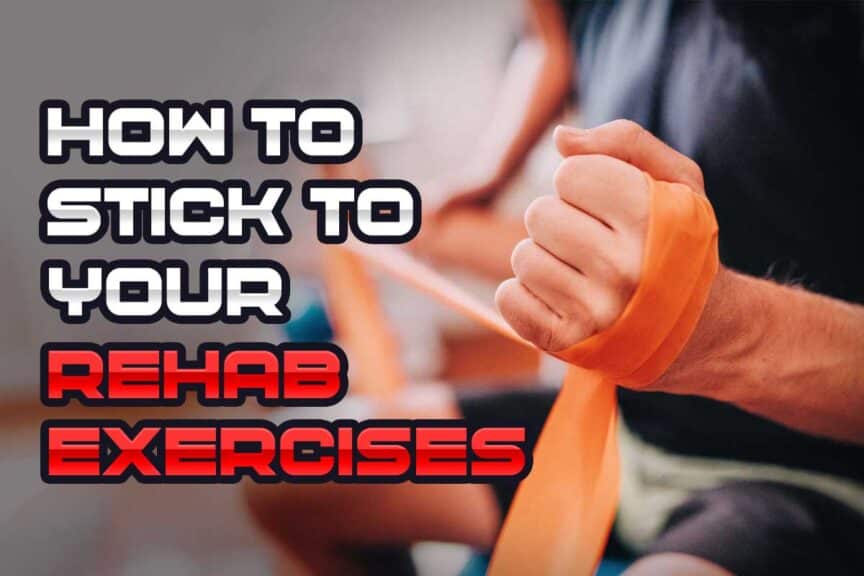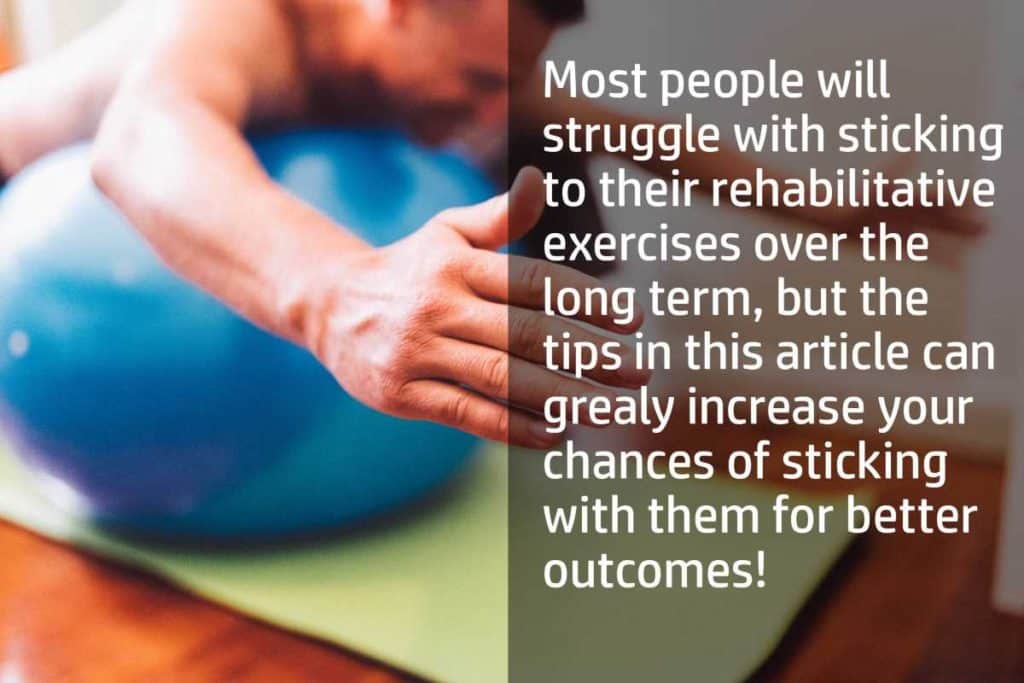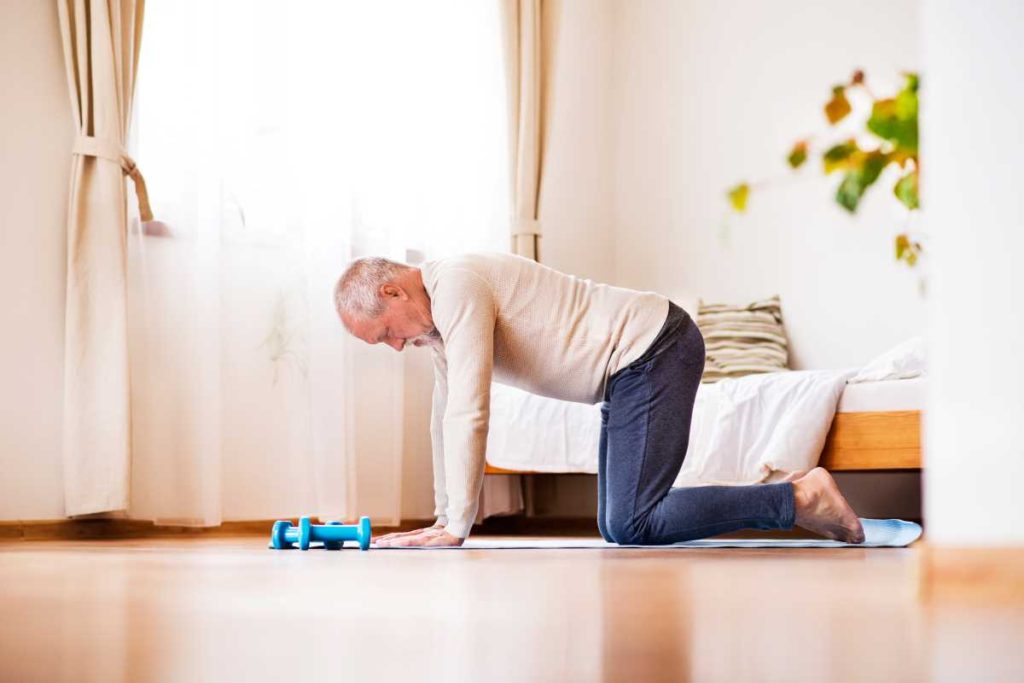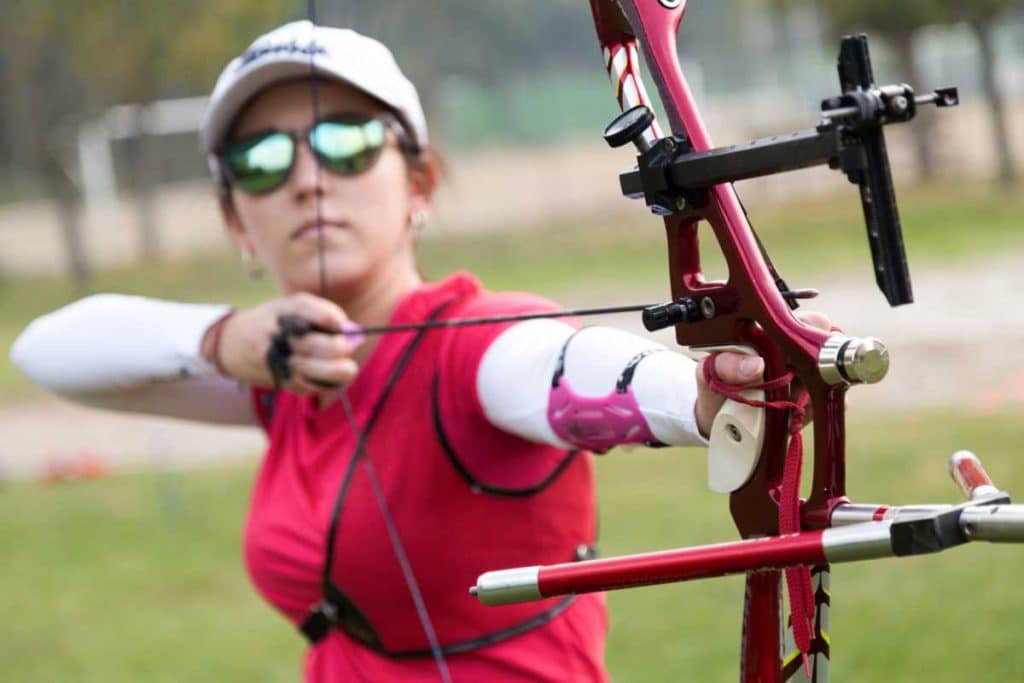If you’re having a hard time sticking to the exercises that your physical therapist has prescribed for you, don’t beat yourself up; patient compliance with exercises over the long-term in the world of physical therapy tends to be around 20-30% (link to research study). And while it’s easy for the PT to point the finger at the patient for who’s at fault, as the old saying goes, “when you point one finger at someone else, you point three right back at you.”In other words, don’t necessarily pin ALL the failure on yourself.
Sticking to your physical therapy exercises can indeed be challenging, but you can greatly increase your chances of success when you better understand what the exercises are aimed at accomplishing, when you enjoy the exercises (as best as possible) and when the exercises are meaningful to YOU.
This blog post will explore these unique factors that have been shown to increase exercise compliance with individuals, and I’ll be sharing some strategies you can implement if you’d like to increase your chances of successful rehabilitation when it comes to doing your exercises.
A quick overview of how to increase your chances of sticking with your exercises:
Tip 1: Increase your understanding of the exercise(s) to increase your adherence.
Tip 2: You’re more likely to do exercises that you enjoy or are at least less inconvenient for you to do.
Tip 3: Ask your PT if there is any way to help make your exercises mimic activities you enjoy doing.
Tip 4: Stick with it! Once you feel the exercises making a difference, you’ll be much more likely to stick with them.
These tips are all discussed in greater detail below, so be sure to keep on reading!
Tip 1: Increase your understanding of the exercise(s) to increase your adherence
It’s incredibly common for patients to quit performing their exercise(s) when they don’t understand what the exercise is aiming to accomplish. It can be frustrating to do something because you’re just blindly told to do so, or you can’t remember why it needs to be done. I certainly can’t blame anyone when this is the case. If your therapist hasn’t explained how your exercise(s) are designed to help with your condition or you would like further explanation than what was initially given, don’t hesitate to ask!
A lack of understanding will also often result in patients ceasing to perform their exercises if they’re not sure that they’re performing them correctly. This can be either due to fear of making the condition worse or just from feeling like they’re wasting their time if they’re doing it wrong (believing they won’t get any benefit as a result). Again, I don’t blame them; exercises can be tricky to physically execute and it can be challenging to remember the nuances that come along with performing them.
The solution is to ask your therapist any and all questions you have pertaining to your exercise(s) until you feel like you have the understanding you’re after.
Don’t feel like a burden for asking questions – our job as physical therapists is to educate our patients! Your therapist may be able to give you some handouts to take home or might even be able to pull up some good YouTube videos for you to watch.
The quick take away: Do what you need to and ask the questions that you feel are important in order to better understand the exercises that have been given to you. Exercises are so much easier to stick with when you understand their purpose and how they’re aimed at getting you out of pain and/or regaining your functional abilities.
Tip 2: You’re more likely to do exercises that you enjoy and are less inconvenient for you to do
It’s important to know that rehabilitative exercises even under the most ideal circumstances won’t always be 100% enjoyable. But if you’re really just hating the exercise(s) that your therapist has you doing, it may be worth asking them if there’s an alternative exercise that you can do instead.
Therapists would rather give you an exercise that is only 80% as effective but that you’ll do with 80% adherence than give the most effective exercise that you’ll only adhere to 20% of the time.
Another reason why we may have difficulty with regularly performing our exercises is due to an inconvenience-factor associated with that particular exercise.
Some exercises are pretty convenient to perform while others are seemingly much more inconvenient. Exercises that don’t require any equipment (or specific equipment) and/or exercises that can be performed practically anywhere are MUCH easier to adhere to and perform regularly when compared to those that require unique equipment or can’t be performed in as many locations.
As an example: If you’re a busy individual, always on the run, or perhaps stuck in a crowded office all day long, maybe you’re finding it hard to lay down on the floor to perform an exercise or stretching-type movement that your therapist gave you. If you find this to be really making it difficult to adhere to your daily exercise(s), you might want to ask your therapist if there is a similar exercise or movement that you could perform while seated or while standing.
It’s not always possible that there will be effective exercises or movements that can be done in such different ways, but usually there are. Physical therapists are pretty good at adapting movements and exercises to different positions and circumstances.
The quick takeaway: The best exercises for you to do are the ones that you will adhere to the most and perform consistently. This means that exercises that are the most enjoyable and convenient for you are your best bet – so be sure to ask your therapist if there are changes to exercises that can be made if you’re having these particular troubles.
Tip 3: Ask your PT if there’s any way to help make your exercises mimic activities you enjoy doing
Here’s a pro tip: the more meaningful you can make an exercise or movement, the more likely you are to see the value in the exercise, thus increasing your likelihood in sticking with it.
No one likes doing exercises that they feel are meaningless or serve no purpose to real life. So, the key is to therefore try and perform the movement or exercise in a way where you can see it serving functional purpose to your daily life or activities that you enjoy.
Asking your physical therapist to help you do this is a great first step to take. Physical therapists should always try (to the best of the particular situation) to give exercises that patients find meaningful. Sometimes we fail to do this, and so you asking us to help find a way to make it more meaningful can be a great thing to do!
As an example: Let’s say that a patient is performing a strength training exercise for their elbow, due to having weak muscles. The problem is that holding onto a dumbbell or a piece of theraband while performing the exercise just doesn’t seem like it has any functional carryover to the real world for them (it does, but sometimes the patient can’t quite see how).
Well, maybe they really enjoy playing tennis or golf. So perhaps performing a very similar exercise where they hold onto a racket or a club while performing the movement makes the exercise much more meaningful to them. This may sound silly, but if it increases compliance and helps the patient “connect the dots” then who cares if it’s silly or not!
The quick take away: Humans enjoy activities that they find meaning in. Sometimes its hard for people to find meaning in performing foreign movements that have no seeming connection between rehabilitative therapy and real world activities. If this happens to be you, ask your therapist how an exercise can be modified to make it more meaningful to you.
Tip 4: Stick with it! Once you feel the exercises making a difference, you’ll be much more likely to stick with them
No one wants to keep doing an exercise that doesn’t seem to be making any sort of improvements to your pain or your condition. Exercises are designed to get you out of pain and help you return to a healthier state. And if the exercise isn’t working, then it’s only natural for a person to stop performing it.
The problem is that sometimes patients just give up a bit too soon; they are well on their way to making their first noticeable difference in their pain or condition, but quit right before that point.
Depending on a number of factors pertaining to your injury and situation, your exercise(s) may take a bit of time to produce a lasting, noticeable change. Sometimes it only takes a couple of days, while other times it can take a couple of weeks!
If you feel like your exercise or exercises aren’t helping, don’t give up on performing them until you know you are well past the expected timeline for them to provide their therapeutic benefit. Ask your physical therapist just how long this is expected to take, as the last thing you want is to perform exercises without knowing how long it’s expected to take before things start to improve.
Ask your physical therapist how long they expect it should take before you feel a noticeable improvement with any of your exercises.
If you have an understanding for the potential timeline(s) for noticeable improvement, it will be MUCH easier to keep pushing onwards with your exercises.
As an example: If your therapist believes it will be two or three weeks before you feel or see a definite improvement with your injury or condition but you’re only one week into your exercises and have yet to see or feel any improvement, you’ll be much more likely to keep with the exercises since you know that you’ve still got some more time to go.
It’s a different scenario when you’ve been doing an exercise for a week or two and keep thinking to yourself “shouldn’t I feel some sort of change by now?” When in fact you’ve still got another week or so to go.
The quick takeaway: Many patients give up on their exercises simply because they don’t have an accurate understanding or expectations of how long it might take or how many times they may have to perform their exercises before improvement becomes noticeable. As a result, they’re headed on the right track but give up before the results are realized.
Ask your physical therapist how long you’ll likely have to do your exercises before things begin to feel better. Once you know the expected timeline, it’ll be a lot easier to stick with it!
Concluding remarks
Having a hard time adhering to your physical therapy exercises is about as common as finding milk in a person’s refrigerator. The key is to not beat yourself up about it, but rather look for and ask for ways that you can give yourself better chances of sticking with it.
Don’t be afraid to talk to your physical therapist about brainstorming some additional ways to help you commit to your exercises in addition to the tips within this article. This is a common conversation we have with patients, as we want you to be as successful as possible in getting through what brought you into the clinic in the first place. While we can’t always make everything fun or perfectly ideal, we love getting creative and coming up with strategies and tactics that help you succeed as best as possible with your home exercises.
Move well. Live Bold.
-Jim
Related Articles:
- How to Prepare for Your First Physical Therapy Appointment
- Can Physical Therapy Help Me Lose Weight?
- How Can Physical Therapy Help with Balance Issues?
- Five Massive Reasons Why Physical Therapy is Important After an Injury
- What to Expect for Your First Physical Therapy Appointment

Hi! I’m Jim Wittstrom, PT, DPT, CSCS, Pn1.
I am a physical therapist who is passionate about all things pertaining to strength & conditioning, human movement, injury prevention and rehabilitation. I created StrengthResurgence.com in order to help others become stronger and healthier. I also love helping aspiring students and therapists fulfill their dreams of becoming successful in school and within their clinical PT practice. Thanks for checking out my site!







